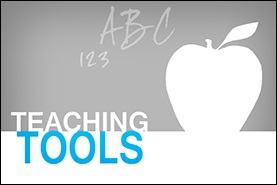
Michigan Humanities Great Michigan Read: What the Eyes Don’t See Teacher’s Guide
12-page guide includes:
Information relating to:
- Introduction to What the Eyes Don’t See
- Discussion Prompts (by book section)
- Section 1 - pages 3-52
- Section 2 - pages 53-99
- Section 3 - pages 100-160
- Section 4 - pages 161-208
- Section 5 - pages 209-275
- Section 6 - pages 276-329
- Activity Ideas
- Photo Collage
- Figures and Moments in Michigan’s History
- The Study
- Bringing Details to Life
- Whistleblowers
- Rights of the People of Flint
- Congressional Testimony
- Mock Trial
- Creative Writing
- Interviews and Journalism
- Public Health Research
- Literary Connections
- Undercover Crisis
- Government Mistrust - The Ethics of Trust
- Local Government Book Talk
- Instructional Standards and Targets
- Standards
- Michigan K-12 Standards for Social Studies
- Michigan K-12 Standards for English Language Arts
- Targets
- Art Education: Michigan Merit Curriculum
- Science
- Social Studies
- Inquiry
- Economics
- Standards
- Additional Connection Resources
Michigan Humanities Great Michigan Read: What the Eyes Don’t See Reader’s Guide
19-page guide includes:
Information relating to:
- What is the Great Michigan Read
- What the Eyes Don’t See and Author Mona Hanna-Attisha
- Biography
- Accolades
- Q & A
- An Excerpt from What the Eyes Don’t See
- Excerpt from the prologue
- Discussion Questions
- Key Questions and Resources
- Chronology of Flint Water Crisis
- 38 Key Moments from 2010 – June, 2019
- Migration and Labor Rights
- Background
- Discussion Questions
- Arab American Community in Michigan
- Background
- Discussion Questions
- Where Science and Humanities Meet
- Public Health
- Environmental Justice
- Discussion Questions
- Threats to Safe Drinking Water
- Looking for Lead Natural Resources Defense Council (NRDC) map
- Emerging Contaminants
- Suggested Readings
- Discussion Questions
What the Eyes Don’t See Reader’s Guide from One Book One Maryland 2019
Flint Water Study Updates from The Virginia Tech Research Team
To learn more about the demographics of Flint, navigate to the US Census Data website
CNN Fast Facts: Flint Water Crisis
Lead-Laced Water In Flint: A Step-By-Step Look At The Makings Of A Crisis. The Two-Way NPR. Merritt Kennedy, April 20, 2016
CHARACTER LIST
Dr. Mona (Muna) Hanna-Attisha: Iraqi immigrant, narrator/protagonist of the story; physician, scientist, and activist who has been called to testify twice before the United States Congress and awarded the Freedom of Expression Courage Award by PEN America
Mark (Muaked) Hanna: Dr. Mona’s brother
Mufak Hanna: Dr. Mona’s father; achieved his doctorate in metallurgy; worked for General Motors; progressive and pacifist
Talia Hanna: Dr. Mona’s mother; chemist trained at Baghdad University
Haji (Khalil): Dr. Mona’s maternal grandfather; businessman who lived in Baghdad
Mama Latifa: Dr. Mona’s maternal grandmother; elementary school teacher who lived in Baghdad
Mama Evelyn: Dr. Mona’s paternal grandmother; Iraqi who emigrated to Southfield, MI
Dawood Hanna: Dr. Mona’s paternal grandfather, deceased; railroad station manager
Elliott Attisha: Dr. Mona’s husband; pediatrician
Elin (Warn) Betzano: Environmental engineer who lived in DC; Mona’s high school friend
Marc Edwards: Civil engineer
Jenny LaChance: Research coordinator
Dr. Eden Wells: Chief Medical Officer for the Michigan Health Department
Source: One Maryland One Book